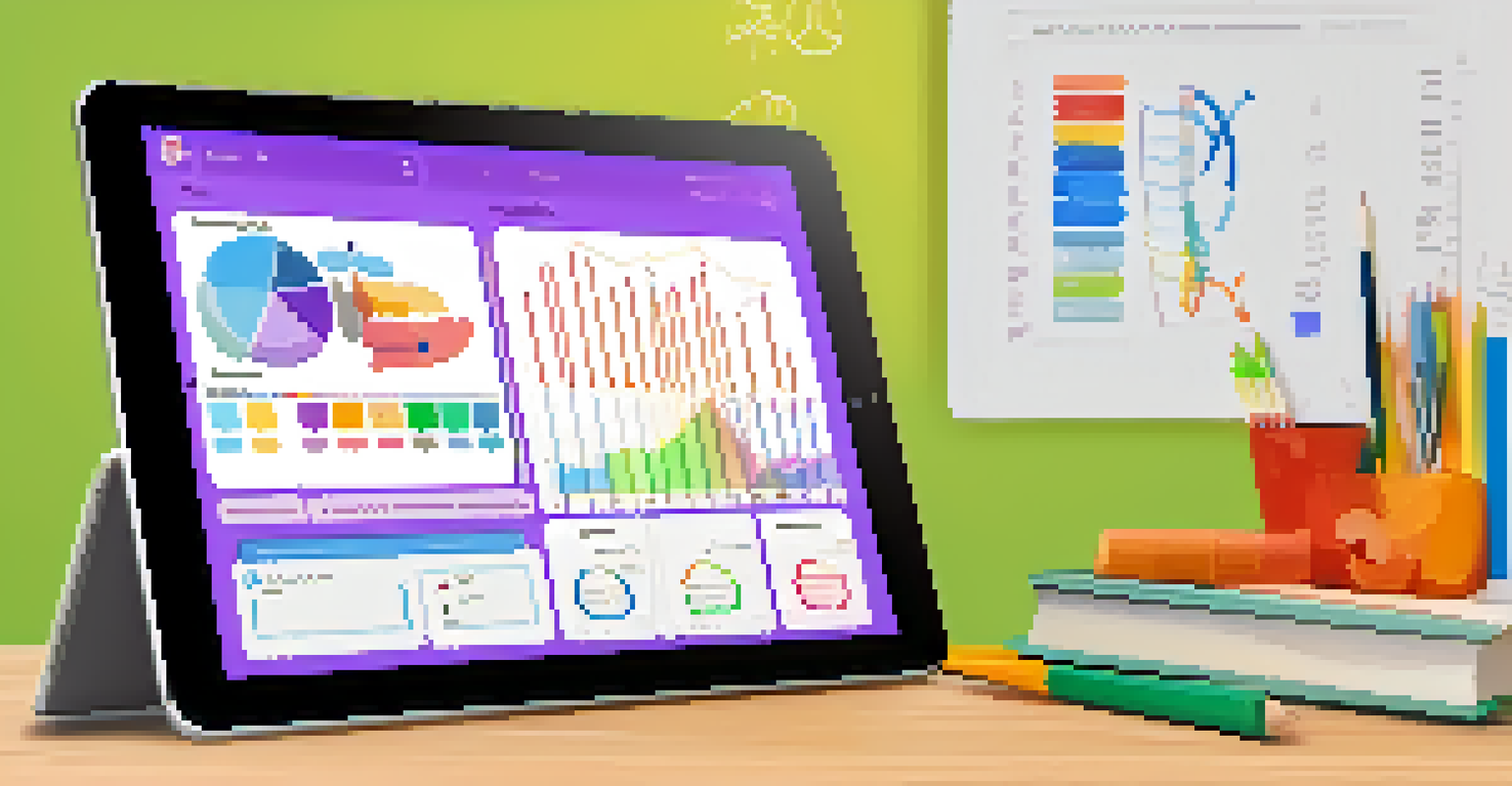Digital Assessment Tools That Promote Self-Directed Learning

Understanding Self-Directed Learning in the Digital Age
Self-directed learning (SDL) is a process where individuals take the initiative in their own learning experiences. In today’s digital age, this concept has gained immense popularity as learners seek more control over their educational journeys. By leveraging technology, learners can set their own goals and track their progress, leading to more personalized learning outcomes.
The greatest gift is not being afraid to question.
For instance, consider a student who wishes to improve their coding skills. Instead of following a traditional classroom syllabus, they can explore online resources, set specific milestones, and assess their understanding through various digital tools. This autonomy not only fosters motivation but also cultivates critical thinking and problem-solving skills.
Ultimately, self-directed learning supported by digital tools encourages learners to become lifelong learners, adapting to new challenges and opportunities as they arise. In this context, it’s essential to explore the various digital assessment tools available that can facilitate this journey.
Key Features of Effective Digital Assessment Tools
When selecting digital assessment tools, it’s important to consider the features that promote self-directed learning. Effective tools often include personalized feedback, progress tracking, and a variety of assessment methods to cater to different learning styles. These features not only enhance engagement but also empower learners to understand their strengths and areas for improvement.

For example, a tool that offers quizzes, interactive simulations, and peer assessments allows learners to explore topics in diverse ways. This variety keeps the learning process exciting and helps maintain motivation, as learners can choose methods that resonate with them. Additionally, instant feedback can guide learners toward the next steps in their learning journey.
Embrace Self-Directed Learning
Self-directed learning empowers individuals to take charge of their educational journeys using digital tools.
Moreover, these tools should be user-friendly, ensuring that learners can navigate them easily without technological barriers. A seamless interface allows learners to focus on what truly matters—their education.
Popular Digital Assessment Tools for Self-Directed Learning
There are several digital assessment tools that have gained traction among learners looking to enhance their self-directed learning experiences. Platforms like Google Forms allow users to create customized quizzes and surveys, providing instant feedback that is both informative and engaging. This flexibility makes it ideal for learners who want to assess their understanding at their own pace.
Tell me and I forget. Teach me and I remember. Involve me and I learn.
Another noteworthy tool is Kahoot!, which transforms learning assessments into fun, interactive games. This approach not only makes the assessment process enjoyable but also encourages friendly competition among peers, motivating learners to participate actively in their education. Plus, the immediate results give learners valuable insights into their performance.
Lastly, platforms like Trello can help learners organize their projects and track their progress visually. By breaking down tasks into manageable steps, learners can see their achievements and stay motivated on their self-directed learning paths.
Integrating Digital Tools into Self-Directed Learning Plans
Integrating digital assessment tools into self-directed learning plans requires careful consideration of individual goals and learning styles. The first step is to identify specific areas where digital tools can enhance the learning experience. For instance, if a learner aims to develop writing skills, selecting a platform that offers writing prompts and feedback can be beneficial.
Next, it’s essential to create a structured plan that incorporates these tools into regular study routines. This could mean setting aside time each week to engage with a particular tool, whether it’s taking quizzes, participating in discussions, or completing projects. Consistency is key to maximizing the benefits of these digital resources.
Importance of Feedback
Immediate and constructive feedback is essential for learners to assess their understanding and improve their skills.
Finally, learners should regularly review their progress and adjust their plans as needed. By reflecting on what works and what doesn’t, they can make informed decisions about which tools to continue using and how to adapt their learning strategies for even greater success.
The Role of Feedback in Self-Directed Learning
Feedback is a crucial component of self-directed learning, as it helps learners gauge their understanding and adjust their approaches accordingly. Digital assessment tools often provide immediate feedback, allowing learners to see where they excel and where they may need additional practice. This timely information is invaluable in the learning process.
For instance, a learner who receives instant feedback on a math quiz can quickly identify which concepts need further review. This enables them to take proactive steps to address gaps in knowledge rather than waiting for formal assessments to uncover issues. By fostering a growth mindset, feedback encourages learners to view challenges as opportunities for improvement.
Additionally, constructive feedback from peers or instructors enhances the learning experience. Many digital tools allow for collaborative features, where learners can share their work and receive input from others, building a supportive learning community.
Overcoming Challenges in Using Digital Assessment Tools
While digital assessment tools offer numerous advantages, there can be challenges in their implementation. One common issue is the potential for technology-related anxiety, where learners may feel overwhelmed by the tools themselves. It’s important to provide guidance and support to help them navigate these resources confidently.
Another challenge is ensuring that learners remain motivated and engaged. With so many distractions in the digital world, it can be easy for learners to lose focus. Encouraging regular check-ins and setting specific goals can help keep learners accountable and committed to their self-directed learning plans.
Future of Digital Assessment
Emerging trends like AI and gamification are set to enhance engagement and personalization in self-directed learning.
Lastly, it’s vital to ensure that the chosen tools are aligned with the learning objectives. Not every digital tool will suit every learner, so it may take some experimentation to find the right fit. By recognizing these challenges, learners can take proactive steps to overcome them and make the most of their digital assessment experiences.
Future Trends in Digital Assessment for Self-Directed Learning
The landscape of digital assessment tools is constantly evolving, and future trends are poised to enhance self-directed learning even further. One exciting development is the rise of artificial intelligence (AI) in education. AI-driven tools can analyze a learner’s performance data and provide personalized recommendations, making learning even more tailored to individual needs.
Moreover, the integration of gamification elements into assessment tools is likely to increase engagement. By incorporating game-like features, learners can enjoy a more interactive experience that motivates them to participate actively and persist through challenges. This trend aligns perfectly with the principles of self-directed learning, where autonomy and engagement are key.

Lastly, as online learning continues to grow, we can expect more collaborative assessment tools that foster community learning. These platforms will allow learners to work together on projects, share feedback, and support one another in their self-directed journeys, creating a rich, interactive learning environment.